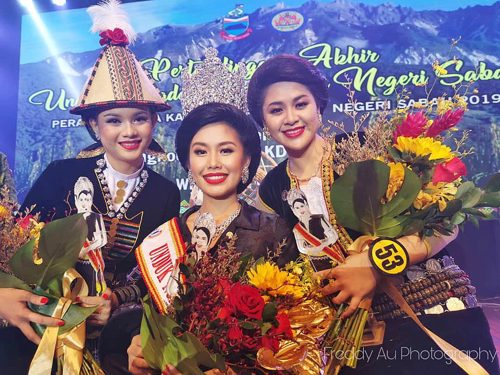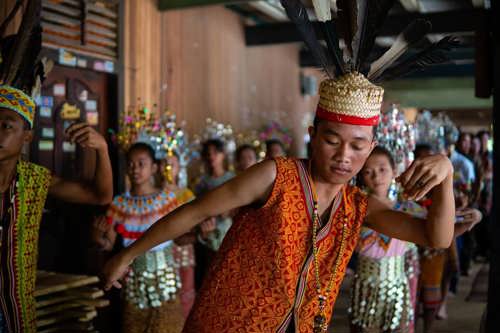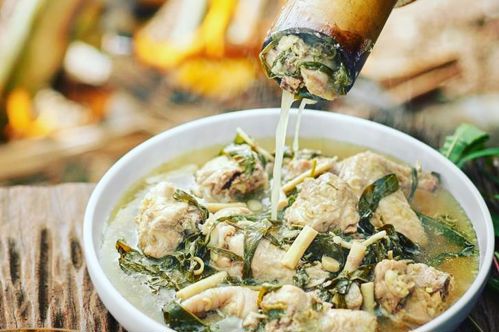Kaamatan/Gawai Is The Most Happening Annual Event in East Malaysia - Here's Why
22 May 2020
From Chinese New Year to Hari Raya, we Malaysians love to celebrate the rich diversity of our beautiful nation! So it comes to no surprise that on the shores of East Malaysia, Harvest Festival (known respectively as Kaamatan and Gawai to Sabahans and Sarawakians) is one of the most celebrated events of the year. Get hyped with these 5 compelling reasons why Kaamatan/Gawai is the most happening annual celebration in East Malaysia:
1. Fascinating Cultural Traditions

Image by unksabahofficial via Instagram
In Sabah, Kaamatan is a Kadazan-Dusun term for "harvest" and is celebrated for the whole month of May. The celebration stems from a legend where Kinoingan, a God, sacrificed his daughter, Huminodun, over a paddy field to save his people from a great famine. Various cultural activities occur throughout the season, but the most fascinating tradition would be the Unduk Ngadau beauty pageant where a maiden is crowned queen to commemorate the spirit of Huminodun!

Image by kynantegar via Instagram
Meanwhile in Sarawak, Gawai Dayak used to be a more religious celebration for the Dayak tribes. The tribe would give thanks to their god known as "Petara" after every harvest and before starting rice cultivation for the next season. Today, the Gawai festival is one that celebrates unity, aspiration, and hope by many different ethnic groups such as Iban, Bidayuh, Kenyah, Kelabit, and Murut.

Image by amazingborneo via Instagram
In Sabah, you can enjoy a feast of local delicacies like hinava (raw fish marinated in lime and citrus), bambangan (a seasonal wild mango fruit), butod (sago grub), and more! Wild boar or bakas is also very popular with the Kadazandusun community, and often an essential item at local Kaamatan bazaars. Sweets include hinompuka, a type of gooey rice cake steamed in banana leaves and flavoured with dark palm sugar. No surprise there, considering the harvest festival is all about rice!

Image by sasetpahang via Instagram
In Sarawak, traditional treats are prepared from glutinous rice flour mixed with sugar, such as sarang semut (ant nest cake), cuwan (molded cake), kui sepit (twisted cake), and penganan iri (a discus-shaped cake).On Gawai eve, glutinous rice is roasted in bamboo known as ngelulun pulut, along with a multitude of traditional dishes such as pansoh manok, chicken and lemongrass cooked in a bamboo log over an open fire! We’re already drooling at the thought of how deliciously smoked this chicken will be thanks to this cooking method.
3. The dancing is lit!
Trust us, when East Malaysians start dancing, the parties are only just getting started. In Sabah, the Sumazau is the must-do traditional folk dance of the Kadazan Dusun. The dance is inspired by eagle flying patterns witnessed by farmers in the field during harvest season.
Meanwhile, Magunatip, also known as the Bamboo Dance, gets faster and faster as the dance goes on, leaving both the audience and dancers out of breath! We dare you to give it a try!
In Sarawak, the traditional dance Ngajat is performed during the Gawai celebration.The male dancers wear large feathers as part of their headgear, hold an ornate and long shield in their hand with chains, beads and a loincloth called the ‘cawat’. The female dancers have an elaborate headdress, chains, beads and a ‘dress’ that reaches to below their knees with intricate weaving. It is an elegant dance to behold, even as an audience member!
4. Did we mention alcohol?
For alcoholic drinkers, the harvest festival is also a great opportunity to sample local rice wines to expand your palate! In Sabah, rice wine is usually made from glutinous rice fermented over time in a clay jar. Rice wine here is known as lihing, hiing (certain Dusun languages), kinomol, segantang, kinarung, kinopi, linahas, and even tapai. Each type differs slightly based on their ingredients and fermentation times!
Language Tip: In Sabah, the word Aramaiti is used synonymously with the word cheers before taking your drink!
In Sarawak, drinking tuak, the locally brewed rice wine, is a tradition during the festival! It is brewed at least one month before the Gawai Dayak and brewed from glutinous rice mixed with homemade yeast. It is offered as a welcome drink to any guest who visits their longhouse.
5. The best part? Friendly locals who’ll treat you like one of the family!

With more than 100 tribes and dialects spoken, it is no wonder that the population of Sabah and Sarawak is considered colourfully diverse. As a result of this diversity, Sabahans and Sarawakians are always open to welcoming new members to their ‘family’ with open arms, and are considered some of the warmest people you’ll ever meet!
While travel might not be available to most of us right now due to the COVID-19 outbreak, it doesn’t hurt to dream! Make a mental note to celebrate Kaamatan or Gawai in East Malaysia on your travel bucket list in the future. You can even take it a step further by signing up to Mayflower.com.my and making use of our travel wallet for future travels! Sabah and Sarawak await you with open arms!
Meanwhile, don’t forget to continue social distancing and stay safe everyone!
In light of the current circumstances, Mayflower Holidays recognise that our customers may have difficulty in reaching us through our customer support helpline. We strongly urge customers with non-immediate concerns to contact us via email at cs@mayflower-group.com or through our contact form if you have any concerns or issues. Meanwhile, we would like to remind everyone to stay safe during this period. See you again soon!

